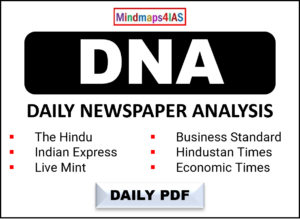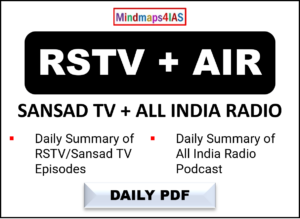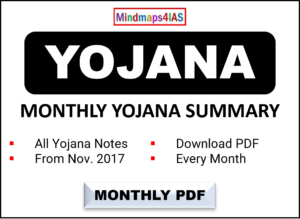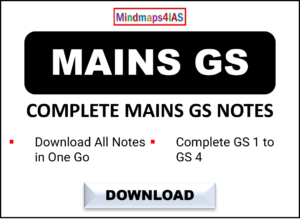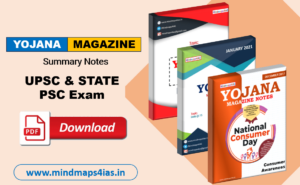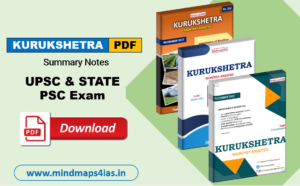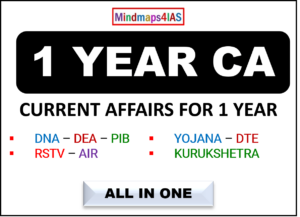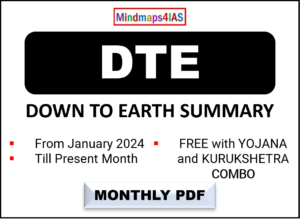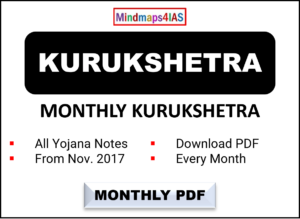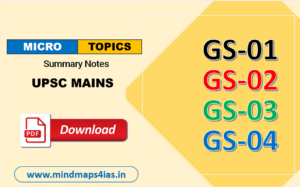UPSC Mains-2022 – General Studies 3 Trend Analysis
| No. | Question | Why UPSC Asked this question? |
| 01 | Why is Public Private Partnership (PPP) required in infrastructural projects ? Examine the role of PPP model in the redevelopment of Railway Stations in India. (Answer in 150 words) 10 |
|
| 02 | Is inclusive growth possible under market economy ? State the significance of financial inclusion in achieving economic growth in India. (Answer in 150 words) 10 |
|
| 03 | What are the major challenges of Public Distribution System (PDS) in India ? How can it be made effective and transparent ? (Answer in 150 words) 10 |
|
| 04 | Elaborate the scope and significance of the food processing industry in India. (Answer in 150 words) 10 |
|
| 05 | The increase in life expectancy in the country has led to newer health challenges in the community. What are those challenges and what steps need to be taken to meet them ? (Answer in 150 words) 10 |
|
| 06 | Each year a large amount of plant material, cellulose, is deposited on the surface of Planet Earth. What are the natural processes this cellulose undergoes before yielding carbon dioxide, water and other end products ? (Answer in 150 words) 10 |
|
| 07 | Discuss in detail the photochemical smog emphasizing its formation, effects and mitigation. Explain the 1999 Gothenburg Protocol. (Answer in 150 words) 10 |
|
| 08 | Explain the mechanism and occurrence of cloudburst in the context of the Indian subcontinent. Discuss two recent examples. (Answer in 150 words) 10 |
|
| 09 | Discuss the types of organised crimes. Describe the linkages between terrorists and organised crime that exist at the national and transnational levels. (Answer in 150 words) 10 |
|
| 10 | What are the maritime security challenges in India ? Discuss the organisational, technical and procedural initiatives taken to improve the maritime security. (Answer in 150 words) 10 |
|
| 11 | Economic growth in the recent past has been led by increase in labour activity.” Explain this statement. Suggest the growth pattern that will lead to creation of more jobs without compromising labour productivity. (Answer in 250 words) 15 |
|
| 12 | Do you think India will meet 50 percent of its energy needs from renewable energy by 2030 ? Justify your answer. How will the shift of subsidies from fossil fuels to renewables help achieve the above objective ? Explain. (Answer in 250 words) 15 |
|
| 13 | What are the main bottlenecks in upstream and downstream process of marketing of agricultural products in India ? (Answer in 250 words) 15 |
|
| 14 | What is Integrated Farming System ? How is it helpful to small and marginal farmers in India ? (Answer in 250 words) 15 |
|
| 15 | Launched on 25th December, 2021, James Webb Space Telescope has been much in the news since then. What are its unique features which make it superior to its predecessor Space Telescopes ? What are the key goals of this mission ? What potential benefits does it hold for the human race? (Answer in 250 words) 15 |
|
| 16 | What is the basic principle behind vaccine development? How do vaccines work? What approaches were adopted by the Indian vaccine manufacturers to produce COVID-19 vaccines ? (Answer in 250 words) 15 |
|
| 17 | Discuss global warming and mention its effects on the global climate. Explain the control measures to bring down the level of greenhouse gases which cause global warming, in the light of the Kyoto Protocol, 1997. (Answer in 250 words) 15 |
|
| 18 | Explain the causes and effects of coastal erosion in India. What are the available coastal management techniques for combating the hazard ? (Answer in 250 words) 15 |
|
| 19 | What are the different elements of cyber security ? Keeping in view the challenges in cyber security, examine the extent to which India has successfully developed a comprehensive National Cyber Security Strategy. (Answer in 250 words) 15 |
|
| 20 | Naxalism is a social, economic and developmental issue manifesting as a violent internal security threat. In this context, discuss the emerging issues gest a multilayered strategy to tackle the menace of Naxalism. (Answer in 250 words) 15 |
|

